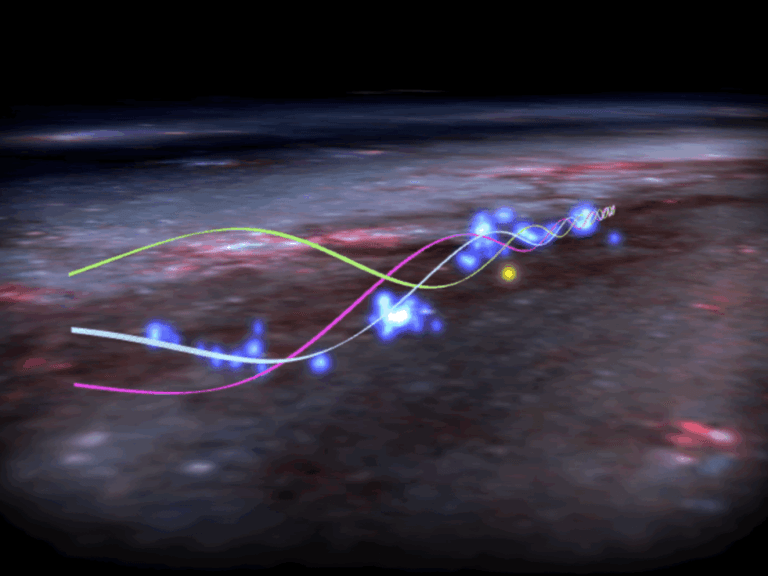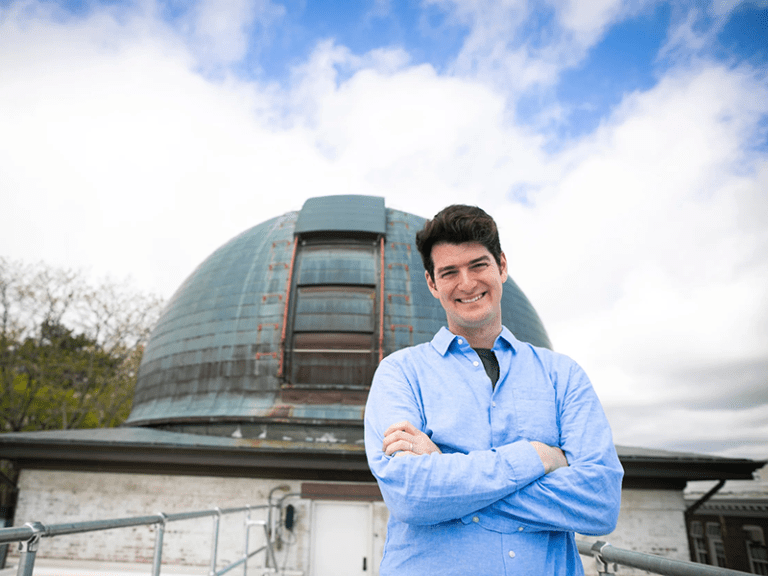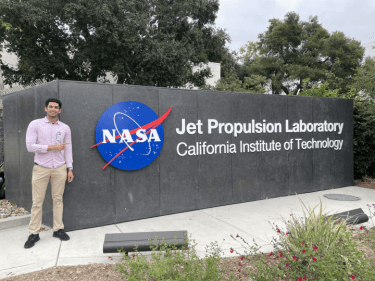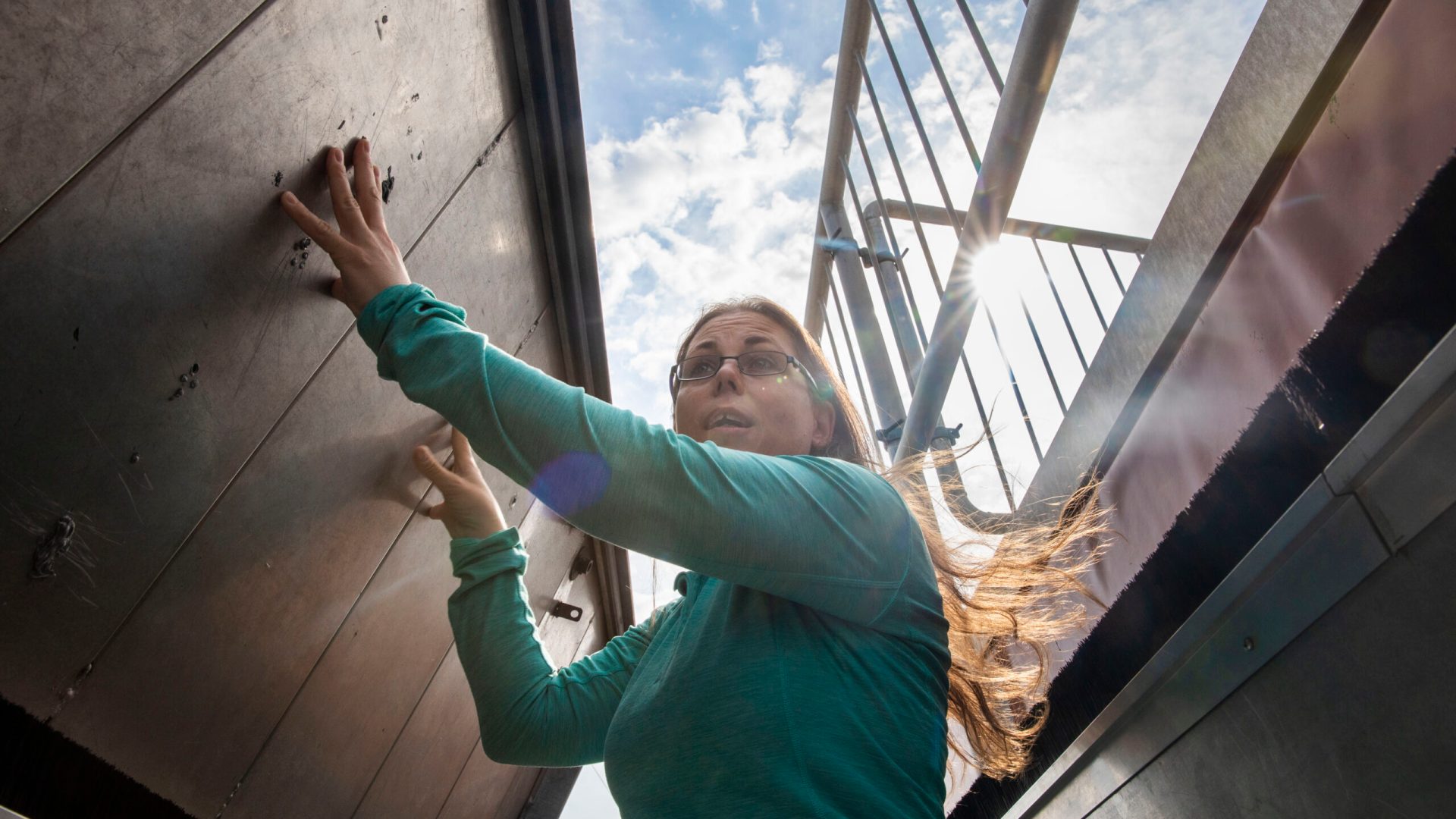Space
Space
Harvard researchers are asking the big questions about the universe, building tools to answer them, and sharing their discoveries with the world.

Riding the Radcliffe Wave
In 2020, astronomers uncovered an enormous secret: A wave-shaped chain of gaseous clouds in our sun’s backyard, giving birth to clusters of stars along the spiral arm of the Milky Way.

Astronomers observe a star consuming a planet
Researchers reported the first-ever sighting of a star engulfing—and obliterating—a planet, providing a preview of what could happen to Earth.

Finding an explanation for the Milky Way’s warp
Harvard astronomers have performed the first calculations that fully explain why the Milky Way is warped and has edges that are flared like a skirt.
Stellar scholars
Kate Sweeney
While at Harvard Business School, Kate wondered how space technology could be used to improve lives back on Earth.
Megan Cordone
On the day she graduated from the Kennedy School, Megan was promoted to first lieutenant in the U.S. Space Force.
London Vallery
What began as a course on the aerospace rights of Native American reservations sparked a passion project that London hopes will become the basis of her future career.
Home among the stars
As more earthlings make their way to space, for business, pleasure, and research, we’ll need to find solutions for many necessities.

How to do business in space
The business of space is no different than new industries everywhere else: it’s tough to launch. Harvard Business School Professor Matthew Weinzierl lays out the strategic roadmap to the stars.
How to do business in spaceExploring space law
Harvard Law lecturer Memme Onwudiwe explains the biggest extraterrestrial issues—and why lawyers should pay attention.

Growing food without gravity
Bioengineering student Rohil Dhaliwal researched plant growth in microgravity.

Eating while floating
Harvard alum Larissa Zhou sees a future where people eat delicious food in space.

Maintaining our spaceships
The Harvard School of Engineering developed robots for maintaining space habitats.

Doctors in space
Harvard alum Chidi Akusobi dove deep at NASA’s Aerospace Medicine Clerkship program.

We want to believe
From exploring the possibility of life in space to theorizing about ways to communicate with it, researchers at Harvard are planning for the day they find out we aren’t alone in the universe.
[A] quarter of all the stars in the galaxy have planets in the habitable zone … it’s not impossible that there may be life elsewhere.”
The quest to understand black holes
In 2019, researchers unveiled the first-ever image of a black hole. Just a few years later, an image of a black hole’s magnetic field was finally captured. In 2022, a second image was released, marking a new era in astronomy.
Since then, researchers have made even more observations about these mysterious regions of space. Astronomers have even observed a black hole emitting stellar remains years after consuming a star.
Our corner of the universe
Harvard University has a long history of space research that, like the universe itself, continues to expand as we inspire more people to wonder at the cosmos.

An accessible universe
Harvard’s Astronomy Lab and Clay Telescope has been made even more accessible through the addition of ramps and sonification equipment, so everyone can enjoy space.
Astronomical foremothers
A constellation of researchers
Today, Harvard programs, labs, and centers are building on the work of these pioneers as they continue to unlock the mysteries of the universe.
You may also like





